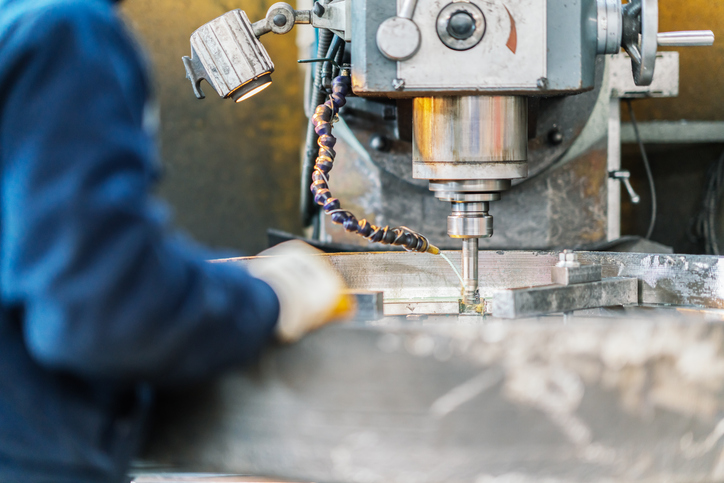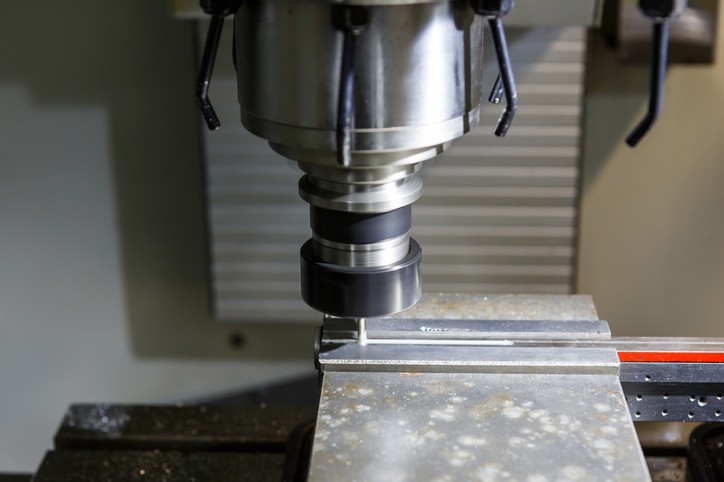- Understanding Metal Joining Fundamentals
- Dip Brazing: Uniform Strength for Complex Assemblies
- Welding: Maximum Strength with Tradeoffs
- Soldering: Precision Connections for Electronics
- Comparative Analysis: The Key Difference Between Brazing and Welding for Defense Applications
- NAMF's Approach to Metal Joining Solutions
- The Future of Metal Joining in Defense Manufacturing
- Frequently Asked Questions
Key Takeaways
- The difference between brazing and welding lies primarily in how heat is applied—brazing provides uniform heating while welding uses intense localized heat.
- Brazing aluminum offers superior dimensional stability and stress distribution compared to welding for precision aerospace components.
- Selecting the right joining method directly impacts component performance, reliability, and lifecycle cost in defense applications.
Behind every ruggedized enclosure in defense systems lies a crucial decision that often determines mission success or failure. The method used to join metal components together affects everything from structural integrity to thermal management to electromagnetic interference shielding. Most engineers understand the importance of material selection. Far fewer give adequate consideration to the joining technique that will hold those carefully selected materials together.
At New Age Metal Fabricating (NAMF), we’ve spent over four decades helping defense and aerospace clients navigate these critical decisions. The right joining technique isn’t just about connecting parts. It’s about ensuring system reliability under the most demanding conditions.
Let’s examine three primary metal joining techniques and how they compare across critical performance factors for defense and aerospace applications.
Understanding Metal Joining Fundamentals
Metal joining techniques fall into three main categories: welding, brazing, and soldering. While they share the goal of creating permanent connections between metal components, they differ significantly in their processes, applications, and results.
These differences become particularly important in defense and aerospace applications, where reliability requirements are stringent and failure consequences severe. The selection of joining method impacts not just immediate production considerations but long-term performance under extreme conditions. Let’s explore each method in detail.
Dip Brazing: Uniform Strength for Complex Assemblies
Dip brazing represents one of the most sophisticated joining techniques available for aerospace and defense applications. The process involves immersing pre-assembled components in a bath of molten salt flux heated to approximately 1100 °F (593.33 °C).
A filler metal with a lower melting point than the base materials flows through the joint by capillary action, creating a metallurgical bond without melting the original components.
Uniform Heat Distribution: The Critical Advantage
Perhaps the most significant technical advantage of aluminum dip brazing stems from the uniform heat distribution inherent to the process. Unlike welding’s highly localized thermal input, dip brazing surrounds the entire assembly with a consistent temperature.
This thermal uniformity eliminates the warping and distortion that frequently compromise welded aluminum structures. For precision components in defense systems, this dimensional stability is often non-negotiable.
Brazing aluminum components efficiently joins metal surfaces across multiple planes in a single operation, simplifying assembly compared to the multistep process of welding.
Superior Metallurgical Properties
The metallurgical characteristics of brazed joints distribute mechanical stress more effectively than welded connections. Unlike the concentrated stress points characteristic of welded joints, brazed connections distribute loads across broader interface surfaces.
This load distribution significantly improves fatigue resistance—a critical performance factor for components subject to vibration or thermal cycling in aerospace applications.
Perhaps most critically, aluminum dip brazing preserves the base material’s mechanical and physical properties. The heat-affected zone characteristic of welding can significantly compromise aluminum’s carefully engineered material properties.
Aerospace and Defense Applications
Aerospace structural components leverage dip brazing’s ability to create strong, lightweight assemblies. From satellite structures to aircraft components, the weight optimization and structural integrity provide compelling advantages over mechanical fastening or welding approaches.
The continuous, uniform joints created through dip brazing provide superior environmental sealing and EMI shielding compared to mechanical fastening or spot welding approaches. This makes the technique ideal for electronic enclosures in defense systems.
Heat exchangers, cold plates, and liquid cooling systems depend on hermetically sealed internal passages that efficiently transfer thermal energy. Aluminum dip brazing creates the leak-free joints and thermal conductivity these applications require.
Welding: Maximum Strength with Tradeoffs
Welding remains the most widely used metal joining technique across industries. The process involves melting and fusing the base metals together, often with additional filler material, creating a joint that can be as strong as the original material.
For defense applications requiring maximum joint strength, welding typically appears as the default choice. However, this strength comes with significant tradeoffs.
Process and Characteristics
Welding applies intense, localized heat to melt the base metals at their interface. As the molten pool solidifies, it creates a continuous metallic bond. Multiple welding processes exist, including TIG, MIG, and resistance welding, each with specific applications.
The heat-affected zone (HAZ) created during welding alters the microstructure and properties of the base metal surrounding the weld. This alteration can reduce fatigue resistance and increase susceptibility to corrosion.
Precision welding for aluminum presents particular challenges due to its high thermal conductivity, low melting point, and formation of tenacious oxide layers. These challenges make alternative joining methods worth considering for many aluminum applications.
Advantages in Defense Applications
Welded joints offer superior strength and are better suited for applications where the joint must endure high stress or load. This makes welding a preferred choice for structural components in heavy military equipment.
Welding is indispensable for fabricating heavier, load-bearing military equipment like armored vehicles, structural components of military bases, and naval ships. The technique creates joints that can withstand extreme mechanical stress.
Modern welding technologies have improved precision and reduced distortion, making the process more viable for a wider range of applications than in previous decades.
Limitations for Precision Components
The intense localized heating during welding causes thermal distortion that can warp precision components. This distortion becomes particularly problematic for thin-walled or complex geometries common in aerospace applications.
Welding typically requires similar metals with comparable melting points, limiting material combinations. This restriction can force design compromises that brazing or soldering might avoid.
The altered material properties in the heat-affected zone can create weak points that may fail under the cyclic loading common in aerospace and defense applications.
Soldering: Precision Connections for Electronics
Soldering operates at lower temperatures than both welding and brazing (typically below 840 °F/450 °C). The process uses a filler metal to join components without melting the base materials, creating connections that are mechanically sound but generally weaker than welded or brazed joints.
This technique finds its primary application in electronics and small-scale assemblies where precision and low-temperature processing are essential.
Process Characteristics
Soldering uses capillary action to draw molten filler metal into the joint. Flux compounds clean the metal surfaces and promote wetting, ensuring proper adhesion and flow of the solder.
The lower processing temperature minimizes thermal stress on components, making soldering ideal for temperature-sensitive applications like electronic assemblies in defense systems.
Different solder alloys provide varying mechanical properties, melting points, and electrical characteristics. Lead-free solders have become increasingly important for environmental compliance.
Applications in Defense Electronics
Electronic systems in aircraft, satellites, and military equipment must withstand extreme temperature fluctuations and vibrations. High-temperature solder is used to ensure reliable connections and long-lasting performance in these critical systems.
In aerospace applications, silver-bearing solders are favored for their superior thermal fatigue resistance, vital for the safety and longevity of flight-critical electronics.
The reliability of solder joints becomes particularly critical in defense applications where maintenance access may be limited or impossible during deployment.
Limitations and Considerations
Soldered joints offer lower mechanical strength compared to welded or brazed connections. This limitation restricts their use primarily to electrical rather than structural applications.
For high-end electronics used in extreme environments like aerospace systems, there are concerns with the tendency of lead-free solder to form tin whiskers—thin filaments that can cause short circuits over time.
Reliability testing becomes essential for soldered connections in defense applications, as joint failure can lead to catastrophic system failures under field conditions.
Comparative Analysis: The Key Difference Between Brazing and Welding for Defense Applications
When selecting a joining method for defense and aerospace applications, several factors must be considered simultaneously. Each technique offers distinct advantages and limitations that must be evaluated against specific project requirements.
Strength and Durability Considerations
Welding typically provides the strongest joints but may compromise material properties in the heat-affected zone. This tradeoff becomes particularly significant for aluminum components where strength-to-weight ratio is critical.
Dip brazing offers an optimal balance for many aerospace applications, providing substantial joint strength while maintaining base material properties and distributing stress more effectively across the joint interface.
Soldering provides adequate strength for electronic connections but lacks the mechanical integrity required for structural applications in defense systems.
Environmental Performance
The continuous, uniform joints created through dip brazing provide superior environmental sealing compared to mechanical fastening or spot welding approaches. This makes the technique ideal for components exposed to harsh environments.
Welded joints can offer excellent environmental protection when properly executed but may develop stress corrosion cracking in certain environments due to residual stresses.
Soldered connections require additional environmental protection in defense applications, typically through conformal coatings or encapsulation to prevent corrosion and mechanical damage.
Manufacturing Efficiency
Dip brazing allows multiple joints to be formed simultaneously, significantly reducing production time for complex assemblies. This efficiency becomes particularly valuable for defense contracts with tight production schedules.
Improved yield rates typically accompany dip brazing compared to welding operations. The controlled, uniform heating minimizes distortion that might otherwise render precision components unusable.
For high-value aluminum components, this yield improvement can significantly impact overall production economics while maintaining the quality standards required for defense applications.
Understanding the difference between welding vs. fabrication processes helps engineers make informed decisions when designing components. While welding joins pieces together, fabrication encompasses the entire process of creating metal structures, which may include cutting, forming, and assembly techniques beyond just joining.
NAMF’s Approach to Metal Joining Solutions
At New Age Metal Fabricating, we’ve developed specialized expertise in aluminum dip brazing while maintaining comprehensive capabilities across all joining techniques. This allows us to recommend and implement the optimal solution for each application.
Our approach begins with a thorough analysis of the component’s functional requirements, environmental exposure, and performance criteria. This analysis guides our recommendation for the most appropriate joining technique.
For defense and aerospace clients, we place particular emphasis on reliability testing and quality assurance. Our ITAR compliance and quality certifications ensure that joined components meet the stringent requirements of these industries.
Case-Specific Selection Criteria
When evaluating which joining technique best suits a specific defense application, we consider several key factors:
Material compatibility remains a primary consideration. While welding typically requires similar metals, brazing and soldering can often join dissimilar materials, opening additional design possibilities.
Component geometry and complexity frequently favor dip brazing for intricate assemblies with multiple joint interfaces. The uniform heating and simultaneous joint formation provide significant advantages for complex structures.
Thermal management requirements frequently point toward dip brazing for components that must efficiently transfer heat, such as electronic enclosures with integrated cooling features.
EMI shielding needs are effectively addressed through the continuous metallic bonds created by dip brazing, providing superior protection for sensitive electronics in defense systems.
As an experienced metal fabrication company, NAMF provides comprehensive brazing services that meet the rigorous demands of aerospace and defense applications. Our specialized expertise allows us to recommend and implement the optimal solution for each unique project.
The Future of Metal Joining in Defense Manufacturing
As defense systems become increasingly sophisticated, the demands on metal joining technologies continue to evolve. Several trends are shaping the future of joining techniques in this sector.
Hybrid joining approaches that combine multiple techniques are gaining traction for complex assemblies. These approaches leverage the strengths of each method while mitigating limitations.
Advanced simulation and modeling tools are improving our ability to predict joint performance under various conditions, reducing the need for extensive physical testing and accelerating development cycles.
Automation and robotics are enhancing precision and repeatability across all joining techniques, ensuring consistent quality even for the most demanding defense applications.
Ready to Optimize Your Metal Joining Processes?
Understanding the critical differences between brazing and welding is just the beginning. Let our team of specialists help you determine the optimal joining technique for your specific application.



